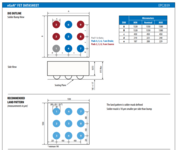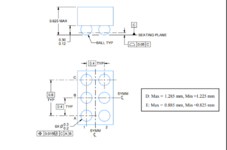Meri96
Junior Member level 3
Hi,
I am inexperienced in soldering, I will use EPC2039 GaN MOSFET and LMG1020 gate driver in my project. MOSFET is pretty small and the package/case is Die. MOSFET pin diameters are given as 208 micrometers. What kind of soldering iron tip should I use in order to be able to solder correctly, how can I decide its thickness.
Do you know of a guide or suggestion on this topic?
I am inexperienced in soldering, I will use EPC2039 GaN MOSFET and LMG1020 gate driver in my project. MOSFET is pretty small and the package/case is Die. MOSFET pin diameters are given as 208 micrometers. What kind of soldering iron tip should I use in order to be able to solder correctly, how can I decide its thickness.
Do you know of a guide or suggestion on this topic?

